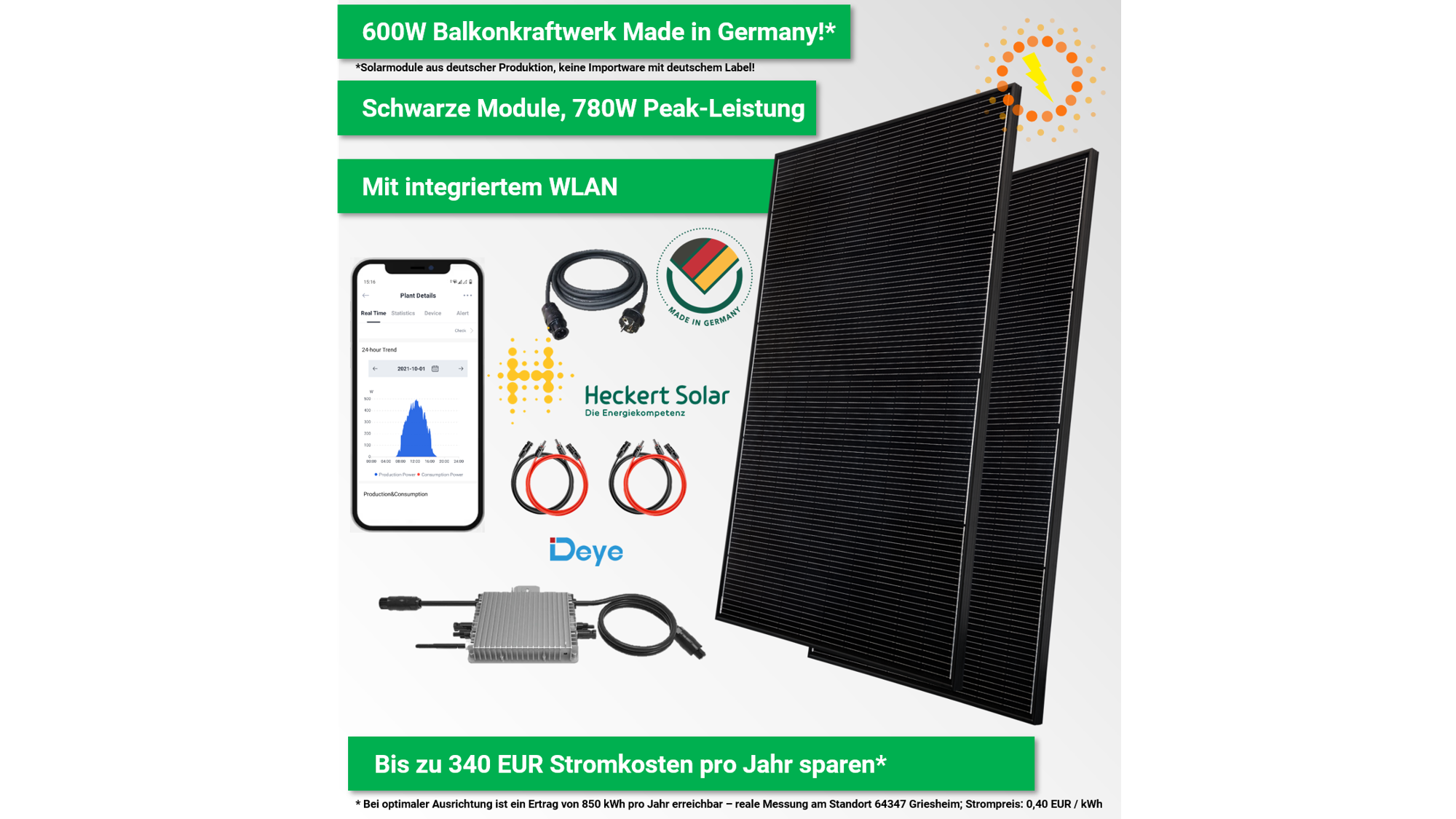As the price of solar system equipment goes down, the feasibility of installing a home solar power system goes up. OK. Basic economics of supply and demand. Whether you’re getting ready to build, or just want to know if you can “go balkonkraftwerk 600w made in germany“, here are three factors you’ll want to consider:
1. How much full sunlight per day do you get? Experts call this the “insolation” factor. You can find out what the approximate insolation factor is for your site on a solar map created by the National Renewable Energy Laboratory. You’ll also need to know some additional site-specific factors…like sun blockage by trees, other buildings, hillside or any other obstruction.
2. Current electricity prices. To determine your payback time, knowing what you’re currently paying (or the average cost for homeowners in that area)…per watt…for electricity can help you determine how long it will take you to pay for solar power installation. Unless you plan to build the solar system yourself, a big part of this equation is the length of time you plan to stay in this home. The longer you’re in the home, the bigger the payback.
3. What rebates and tax incentives are available? Maximizing federal and state incentives can really help offset the initial cost of installing a solar power system. If you have a solar system installed professionally, you may be looking at $40 to $60 thousand dollars for the average American home. Getting a rebate or tax credit of 10 to 60% can go a long way toward putting the initial cost of installing solar more in parity with a standard system.
Let’s face it. If you live in an area, or on a site, that really doesn’t get enough direct sunlight to generate much of a solar power system, it simply may not be worthwhile no matter how much you want to do it. Fortunately, most of the United States gets adequate direct sunlight, excluding specific site constraints, to support a solar power system. If solar really doesn’t work, though, look at all the other renewable energy possibilities.
The cost of photovoltaic cells is beginning to come down dramatically, as new mass production techniques are being used. As the cost of this component of creating solar powered electricity reduces, and the availability increases, home solar power will become more feasible.
New innovations and applications are being rapidly developed. A recent Princeton study shows how engineers have developed a new technique that “could slash the cost of solar panels.” In an article sited in nextbigfuture.com, researchers at Princeton state “By overcoming technical hurdles to producing plastics that are translucent, malleable and able to conduct electricity, the researchers have opened the door to broader use of the materials in a wide range of electrical devices. Plastics could represent a low-cost alternative to indium tin oxide (ITO), an expensive conducting material currently used in solar panels.”
This and similar new developments may soon bring the cost of solar energy systems down enough that it will be infeasible for homeowners… anywhere other than those designated with no or extremely low insolation factors, to consider anything but a solar power system.
Everett Sizemore, a consumer product review expert for comparethebrands.com, says of the feasibility of solar power: “Out of all of the renewable energy alternatives we have today, solar power is still the most feasible for the majority of households in America. With federal, state, and local government incentives, the lowering cost of solar panels and improved efficiency, going solar is cheaper than ever.”
In addition to individual home solar power systems, significant progress is being made in ways to capture, store, and use solar energy in power plants. One of the newest, and most feasible designs uses a molten salt storage loop that enables power plants to store and generate electricity as needed, even if there is no direct sunlight for fairly long periods. Similar to current designs, power grids could be connected to supplement, support, and take advantage of the best solar opportunities within the grid system.

